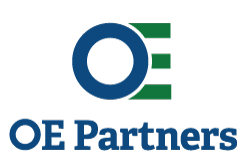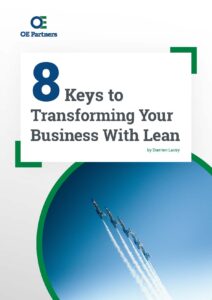Rising costs and tight spending is a reality all businesses are facing. Markets are more competitive and there is greater pressures to improve quality, performance and efficiency while reducing operating costs.
Whilst by no means the only solution to success, getting costs under control is critical in a competitive market. Cost reduction programs become the order of the day, efficiency drives are sponsored. But is there an inexpensive, or even cost-free approach to shaping the bottom line?
Fortunately, we have a few simple principles thanks to Lean thinking that can offer cost-free or low cost savings. Getting everyone in your team understanding the concepts or value added vs. non-valued added work, and the Lean Wastes (defects, over-production, waiting, unutilised talent, transport, inventory, motion, and over-processing) will uncover a myriad of opportunities for cost saving. Many small improvements over time can sometimes have a bigger financial impact than big ticket capital spends on productivity & labour saving tools. So where to focus our attention?
Eliminate the annoyances
Tasks & processes that get under our skin or irritate us at work are often opportunities to improve processes and even eliminate waste. We intuitively know they are inefficient and wasteful, so we hate them. Not only is there potential for cost savings but the added benefits of improved staff morale and engagement. Annoyances are often an obvious place to introduce change to boost productivity.
Understand quality
Quality is a subjective measure. Importantly, what does quality mean in the eyes of your customers? While some may frown upon "cutting corners" sometimes changing engineering or quality specifications can reduce operating costs without impacting customer satisfaction. If it does not matter to your customers or regulators, then, why do it?
Flexible processes
All companies rely upon repeatable and predictable processes. Standard processes can sometimes be created to handle exception cases, which can benefit exceptions but add costs to most work. We must balance conformity with flexibility to reduce operating costs. Seek opportunities to empower staff to make value-based decisions rather than rigid rules-based processes.
The most useless place...
In Dr Seuss' book Oh, The Places You'll Go! the famous author describes a most useless place; The Waiting Place. Every time people are waiting there will be a hidden or obvious cost to the business. Start measuring wait times and identify ways to reduce or eliminate waiting. This can also lead to positive outcomes for customers and employees.
Use what you have
Necessity is the mother of invention. Try to meet your needs without running to the credit card. You may find that waste can be reused for a productive purpose. For example, in the office the back of used paper may be repurposed for taking notes. In the factory, offcuts or boxes may be used to create jigs or improve ergonomics. Within reason encourage staff to find creative ways to solve their problems without new purchases.
Grow your people
The most important asset of any organisation is its people. By helping develop the skills of staff they become more valuable contributors to the company. Their skills can reduce the cost of doing business. On-the-job training and mentoring can be methods for uplifting competences without the need for formal training. As a manager or owner you only have a limited number of hours in day. If you are the only one who can identify the problem, propose the solution and implement the fix, then you have an issue on your hands. Everyone in the business needs to think outside their direct operational tasks and find the opportunities for waste elimination and cost cutting.
Walk your processes…
Putting aside department boundaries, roles & responsibilities how does a customer’s order/ job/project travel through your organisation. How many different hands does it get handled by? How many different systems are used to record and track information? Does that information need to be updated, reworked or corrected? How many steps are required to process this order? Are all necessary in every case? Do your orders/jobs/projects bank up in piles between processes? Are specialist skills really required to carry out a particular task for every order? Or only the tough ones? Have we shared the necessary labour to carry out the process from end to end, evenly? Are there bottlenecks? Etc.
An end to end process review physical walking the business operations should provide a gold mine of waste elimination and cost cutting ideas. However may require re-thinking departmental boundaries and shifting mindsets.
We hope these simple ideas help you identify where to cut costs and get the improvement ball rolling.


